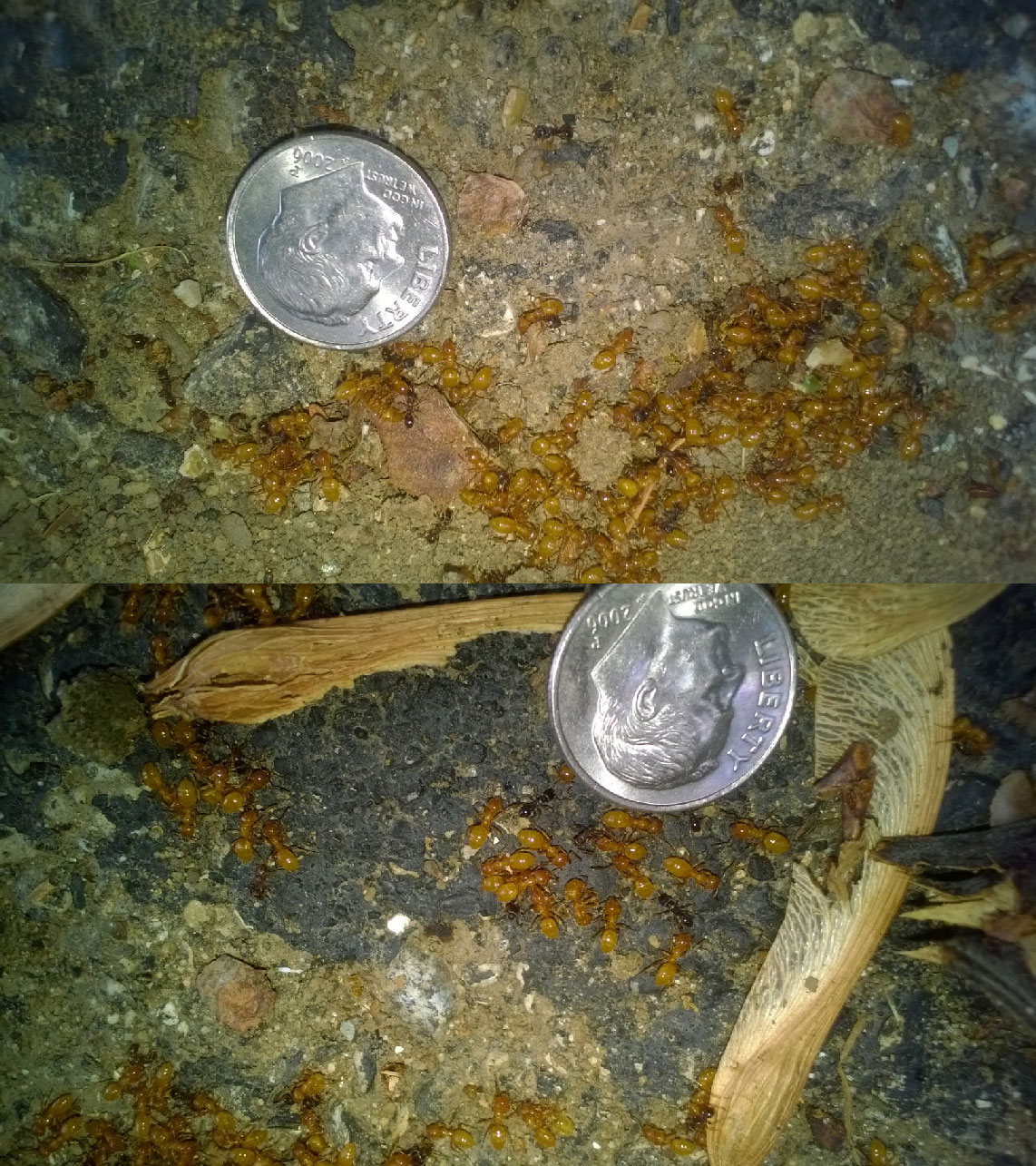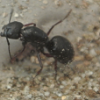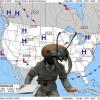Hi there. I have found an ant nest and I'd love to know more about them. This particular nest struck me as odd because it seemed like two separate species of ants was living in it. No just separated by size but also by color and body design. I have included some details along with photos.
1) I found this near my driveway (black topped) under some stones (flat stones) The ant nest appears to stretch about five feel across the ground as I see them coming up out of the cracks and from under the stones along that path. I don't know how deep or far back the nest goes past the rocks (into the grass and flower bed area)
2) The date is 6-7-2014
3) Under flat rocks, ants coming out from cracks in rock and also from between stones.
4) They smelled lemon like… that’s odd.
5) I heard faint popping sounds when I lifted the rock.
6) There were a LOT of red ants and a LOT of black ants.
7) I didn’t see any of the red ants above ground (until I disturbed the nest) Just the black ones
8) The red ants didn’t seem to be too concerned with moving the eggs and other immature ants back into the nest when I pulled up the rock.
9) I went back and pulled up the same rock and there were a LOT more red ants. Almost like the red ones were guards?
The pictures I have posted display the ants next to a dime (for scale)





















